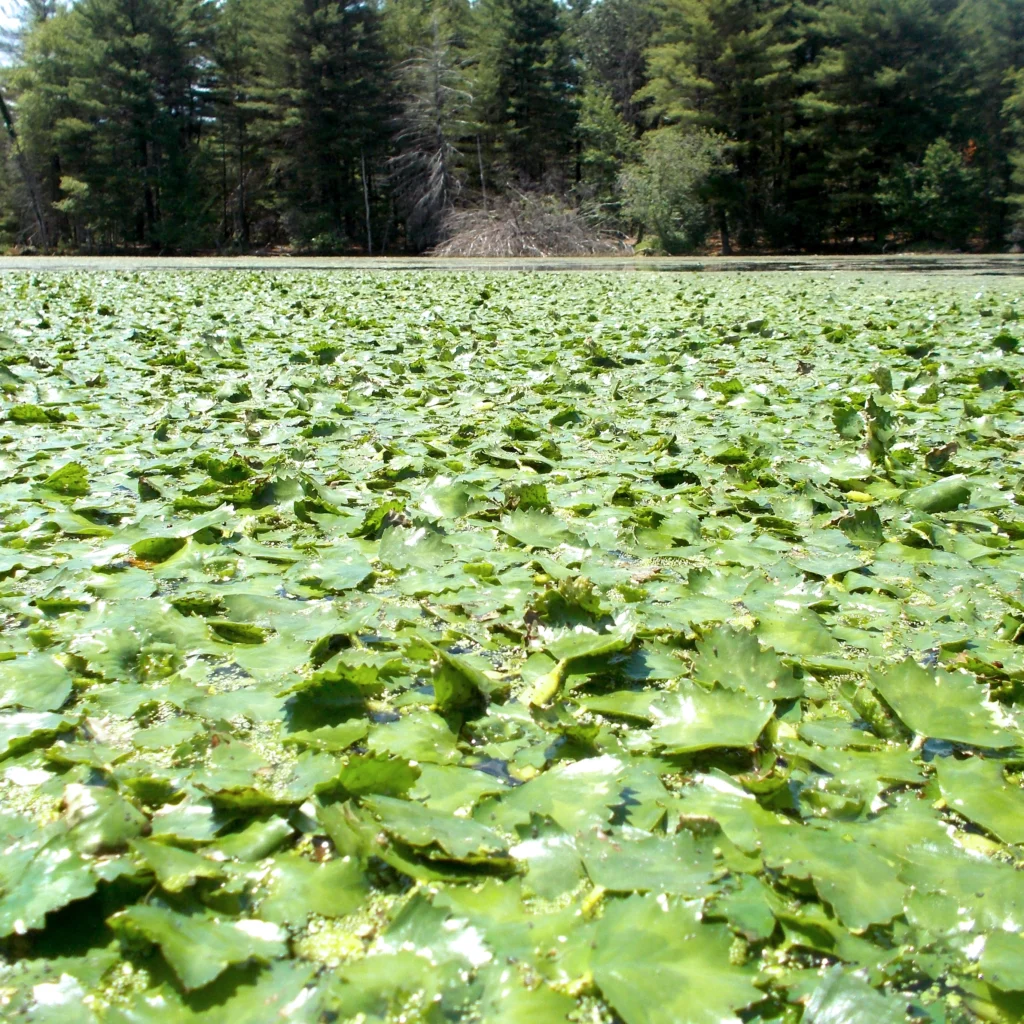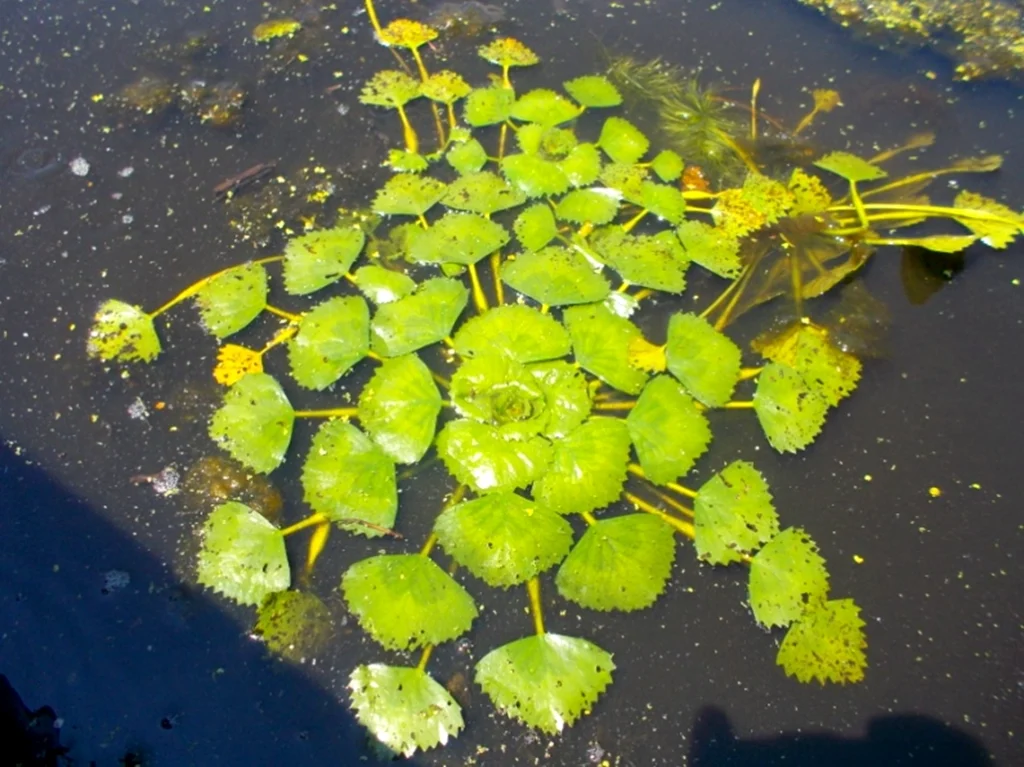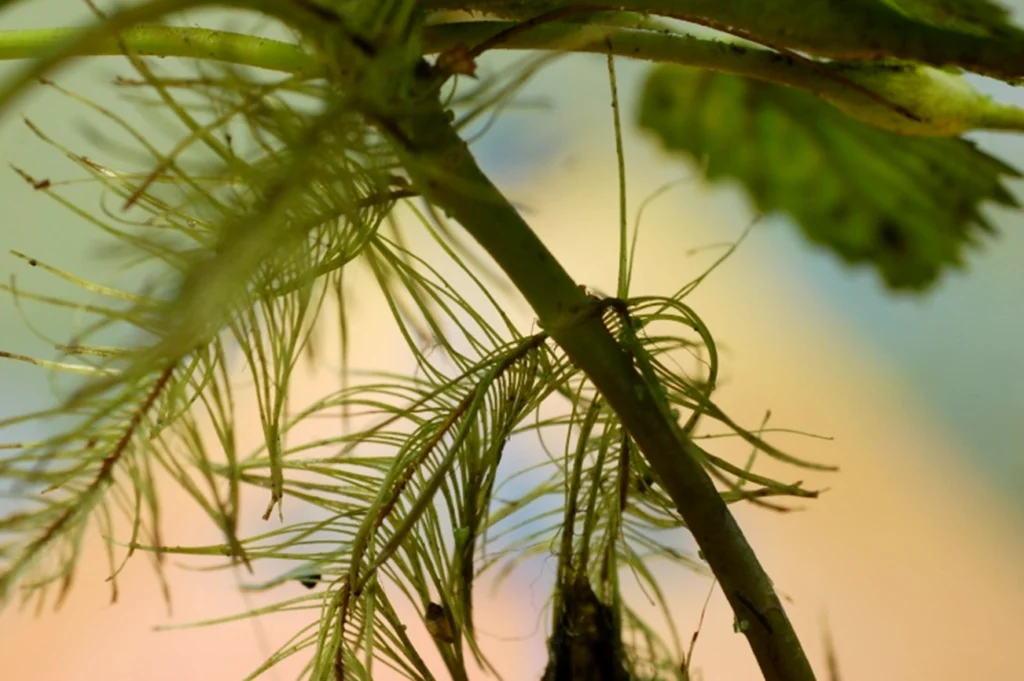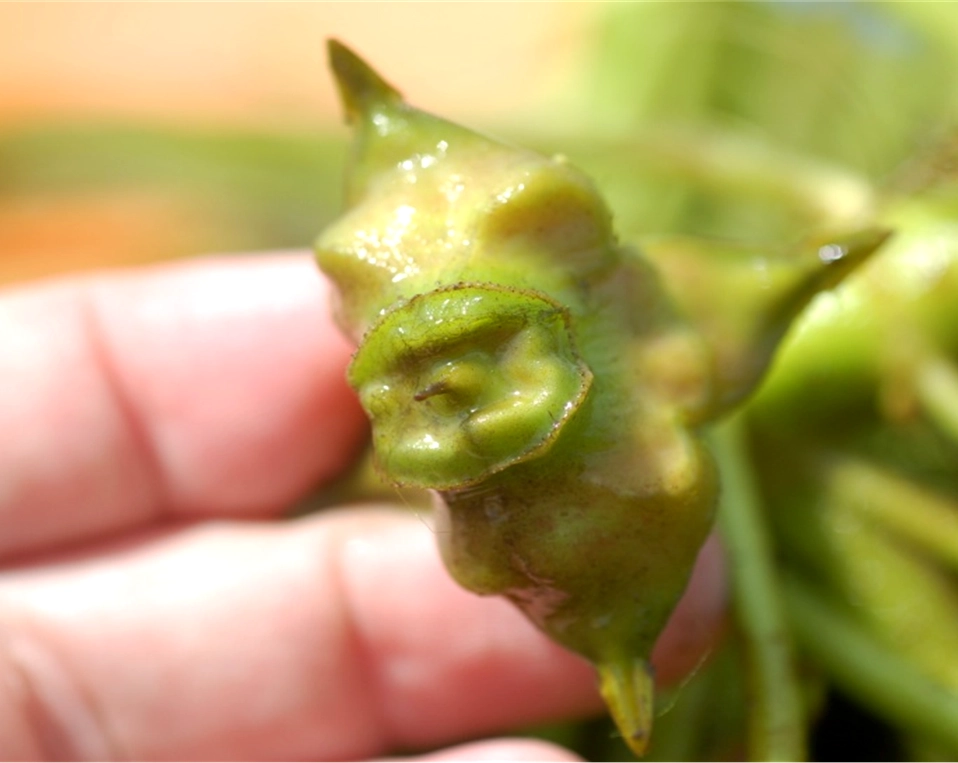Water Chestnut
Water Chestnut: A Growing Threat to Our Rivers



Water chestnut (Trapa natans) is an invasive, fast-growing aquatic plant native to Eurasia. Since its introduction to the United States in the 1800s, water chestnut has spread rapidly throughout water bodies in the Northeast, including our own Sudbury, Assabet, and Concord (SuAsCo) rivers. Its ability to outcompete native plants poses a significant threat to the ecological balance of these rivers.

Water chestnut creates dense mats of floating vegetation that block sunlight from reaching underwater habitats, degrading water quality and reducing oxygen levels. This can disrupt the ecosystem, harm fish populations, and impede recreational activities like paddling, fishing, and swimming. Without control, water chestnut can overtake entire water bodies, drastically reducing biodiversity.
How to Identify Water Chestnut
The plant has several distinctive features that make it relatively easy to identify:


How Does Water Chestnut Spread?
Water chestnut spreads primarily by seeds. Each floating rosette can produce up to 20 seeds that can sink and germinate the following spring. Mature nuts can stay dormant and viable in the sediment for over a decade, meaning that even if the above-water population is managed, the seed bank can produce new plants for many years to come.

OARS’ Long-Term Water Chestnut Management Efforts



Numerous partners and funders, including the U.S. Fish and Wildlife Service, National Oceanic and Atmospheric Administration, and Massachusetts Department of Environmental Protection, have supported OARS’ water chestnut management efforts. Thanks to this support, our dedicated volunteers, and strategic partnerships like SuAsCo CISMA, we’ve made a significant impact in controlling this aggressive invader.
Management and Control of Water Chestnut
OARS has been actively managing water chestnut in the SuAsCo rivers since 2008 through a combination of hand-pulling by volunteers and mechanical harvesting in larger infestations. Our work is guided by the Water Chestnut Management Guidance & Five-Year Management Plan for the Sudbury, Assabet, and Concord River Watershed, which compiles the latest research on the lifecycle and control of water chestnut and offers permitting guidance for control efforts.
Because water chestnut is an annual plant, it’s crucial to remove it before it sets seed each year. Physical removal is highly effective for small infestations if done before mid-August. Larger infestations may require herbicide treatments, but these are used only as a last resort due to potential impacts on non-target species and water quality.
2024 at a glance


Our Impact
Since 2008, OARS volunteers and staff have pulled hundreds of thousands of water chestnut plants from the rivers. The steady effort has yielded significant reductions in plant density in several locations. Water chestnut has been nearly eradicated from parts of the Assabet River in Stow and areas of the Sudbury River in Saxonville. However, annual pulling is still needed because of the long-lived seed bank in the river sediments.
Join the Fight Against Water Chestnut!
Help Us Track Water Chestnut
If you’re paddling or enjoying the rivers, use our Water Chestnut Reporting App to record sightings of water chestnut. This helps us monitor the spread and prioritize areas for removal.
Become a Weed Warrior
If you notice a few plants while on the water, feel free to pull them out, but make sure to compost them well away from the river. Check our Weed Warriors page for best practices on hand-pulling. For larger patches, contact OARS to ensure your removal efforts comply with local and state wetland protection regulations.
Volunteer for Removal Events
OARS hosts water chestnut-pulling events every summer that bring together community members to tackle larger patches. Join us in June through September to help keep our rivers clear! Stay current on OARS Events on our Events Page and sign up to receive our Otter News monthly newsletter to find out when the next Water Chestnut Pulling Day is scheduled.
A Community Effort



Keeping our rivers clear of water chestnut requires all hands on deck. Whether you’re out paddling, walking along the banks, or want to get more involved in river conservation, your help can make a huge difference. Join us as we restore and protect our rivers’ beauty and health!




